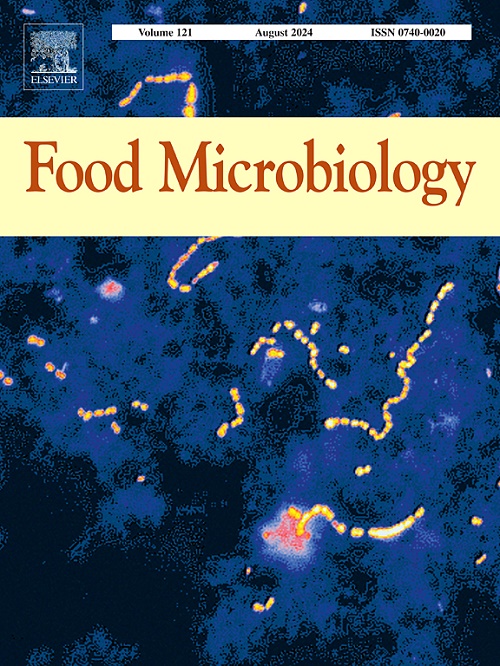The effect of uracil on the freeze-drying survival rate of Lactiplantibacillus plantarum YR07 based on transcriptome analysis
IF 4.5
1区 农林科学
Q1 BIOTECHNOLOGY & APPLIED MICROBIOLOGY
引用次数: 0
Abstract
This study aimed to elucidate how adding uracil to the culture medium enhanced the freeze-drying resistance of Lactiplantibacillus plantarum YR07. The results showed that uracil significantly increased the number of viable cells and the freeze-drying survival rate of L. plantarum YR07 (P < 0.05). This effect was primarily achieved through the regulation of several key genes, including those involved in energy production (pyrR, pyrB, purQ, purN, adhE), cell barrier protection (fabG, serS), cell repair (oppA, uvrC), and oxidative stress response (cysK). Specifically, uracil promoted energy production and substrate availability by upregulating genes related to carbohydrate metabolism and purine biosynthesis. Additionally, uracil enhanced the synthesis of unsaturated fatty acids and glutamine biosynthesis by regulating the expression of genes related to the cell wall and membrane, thereby strengthening the physical protective barrier. Furthermore, by promoting the expression of genes involved in DNA and protein repair, uracil provided the raw materials necessary for cellular repair and helped restore damaged structures by influencing nucleotide metabolism and protein synthesis. Uracil also stimulated the production of sulfur-containing amino acids, which helped L. plantarum YR07 resist oxidative stress and reduce cellular damage. Together, these regulatory mechanisms significantly enhanced the adaptive capacity of L. plantarum YR07 under harsh environmental conditions.

基于转录组分析的尿嘧啶对植物乳杆菌YR07冻干存活率的影响
本研究旨在阐明在培养基中添加尿嘧啶如何增强植物乳杆菌YR07的抗冻干能力。结果表明,尿嘧啶能显著提高植物乳杆菌YR07的活细胞数和冻干存活率(P <;0.05)。这种作用主要是通过调节几个关键基因实现的,包括参与能量产生的基因(pyrR, pyrB, purQ, purN, adhE),细胞屏障保护(fabG, serS),细胞修复(oppA, uvrC)和氧化应激反应(cysK)。具体来说,尿嘧啶通过上调与碳水化合物代谢和嘌呤生物合成相关的基因来促进能量产生和底物利用率。此外,尿嘧啶通过调节细胞壁和细胞膜相关基因的表达,增强了不饱和脂肪酸的合成和谷氨酰胺的生物合成,从而增强了物理保护屏障。此外,尿嘧啶通过促进DNA和蛋白质修复相关基因的表达,为细胞修复提供了必要的原料,并通过影响核苷酸代谢和蛋白质合成来帮助修复受损的结构。尿嘧啶还能刺激含硫氨基酸的产生,从而帮助l.s plantarum YR07抵抗氧化应激,减少细胞损伤。综上所述,这些调控机制显著增强了L. plantarum YR07在恶劣环境条件下的适应能力。
本文章由计算机程序翻译,如有差异,请以英文原文为准。
求助全文
约1分钟内获得全文
求助全文
来源期刊

Food microbiology
工程技术-生物工程与应用微生物
CiteScore
11.30
自引率
3.80%
发文量
179
审稿时长
44 days
期刊介绍:
Food Microbiology publishes original research articles, short communications, review papers, letters, news items and book reviews dealing with all aspects of the microbiology of foods. The editors aim to publish manuscripts of the highest quality which are both relevant and applicable to the broad field covered by the journal. Studies must be novel, have a clear connection to food microbiology, and be of general interest to the international community of food microbiologists. The editors make every effort to ensure rapid and fair reviews, resulting in timely publication of accepted manuscripts.
 求助内容:
求助内容: 应助结果提醒方式:
应助结果提醒方式:


